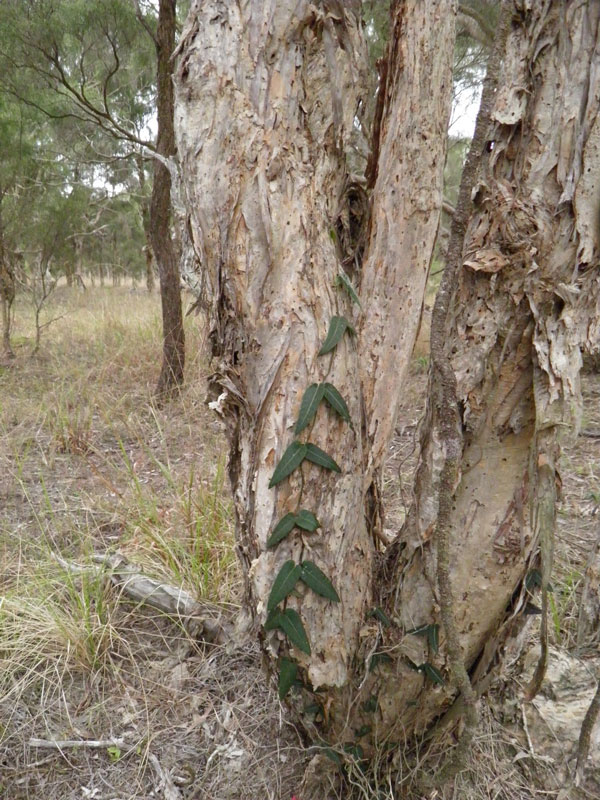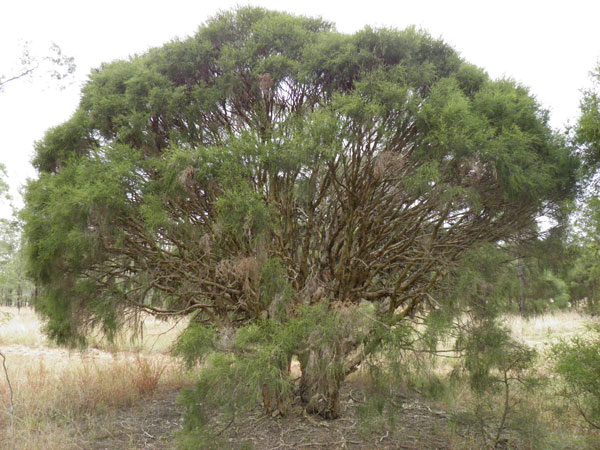(above)About 5 years ago, Ron Smith saw some Land for Wildlife signs appearing around his area, but didn’t think the program was for him. Things changed about 12 months ago after attending a workshop and since then he has taken several steps to protect the bushland on his property, and has received some financial help to do so.
There’s often an interesting story behind a property owner’s decision to join the Land for Wildlife program. One such story began approximately seven months ago, when I received a phone call from an interested property owner in the Lower Mount Walker area.
Ron Smith’s property is situated in Lower Mount Walker, approximately 35 minutes drive south west of the centre of Ipswich. The land covers around 16 hectares and Ron has owned it for over 35 years. Initially the block was bought to raise cattle and use as a small farm, with some intention to move there later on. So far Ron hasn’t moved there, instead over time he slowly moved away from grazing on the land.
Choosing to keep hold of the land to visit and enjoy watching the bush grow back. Ron says “I didn’t want to sell because I love the bush environment and the tranquillity that it brings”. Ron always believed there was a need to “keep somewhere for the wildlife to hang out and live”. With all the urban sprawl, vegetation clearing, industry growth and mining in the area, Ron was getting concerned that he might eventually lose his patch of the Australian bush.


Ron’s property contains Swamp Tea-tree (Melaleuca irbyana) forest shown left and right, which is listed as ‘endangered’ as most for these forests have been cleared. Swamp Tea-trees only occur in the SEQ region.
Around 5 years ago Ron saw Land for Wildlife signs around the area and made some inquiries. At the time he didn’t think the program suited him and he was uncertain of how the Land for Wildlife program would benefit him.
Things changed for Ron fairly recently. He attended a Swamp Tea-tree (Melaleuca irbyana) workshop run by SEQ Catchments in Marburg around 12 months ago. Having a chat to SEQ Catchments staff , Ron was advised to contact Ipswich City Council (ICC) to join Land for Wildlife. With renewed enthusiasm, Ron made contact with me here at ICC.
Ron felt confident that with “the help of the council officers and the Land for Wildlife program things could be improved and protected better”.
After joining Land for Wildlife, Ron hasn’t taken a step backwards. He has since signed up to a Bushland Conservation Partnership with ICC, changed his land zone to conservation, offered his property as a release site for injured and rescued wildlife, and applied for ICC’s Nature Conservation Grant. In addition, he has been working with SEQ Catchment staff to monitor and conserve the endangered Swamp Tea-tree forest on his property.
Things can change over time and so can people’s goals. Ron hopes now, thanks to his commitment to conserving this little piece of the Aussie bush, that future generations will still be able to appreciate it too.
Article by Andrew Bailey Land for Wildlife Officer Ipswich City Council
